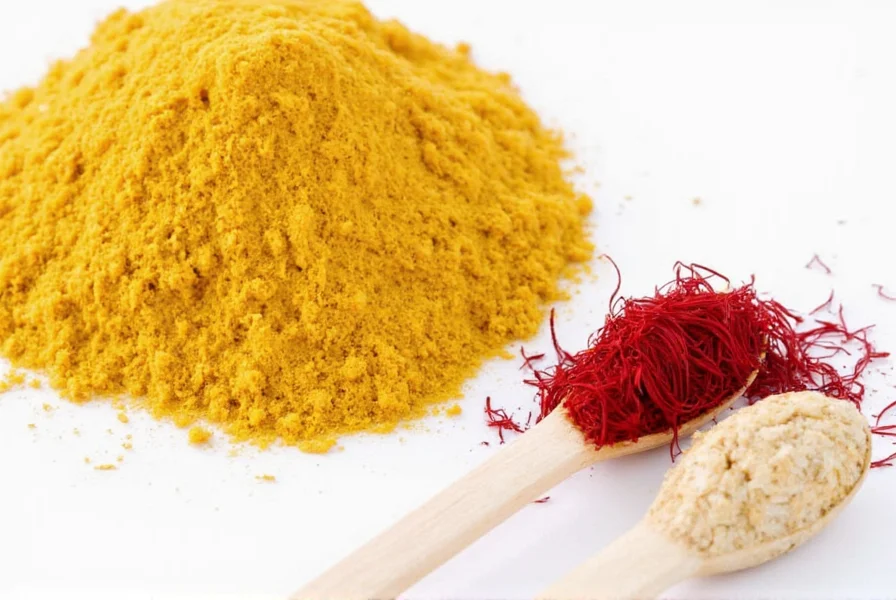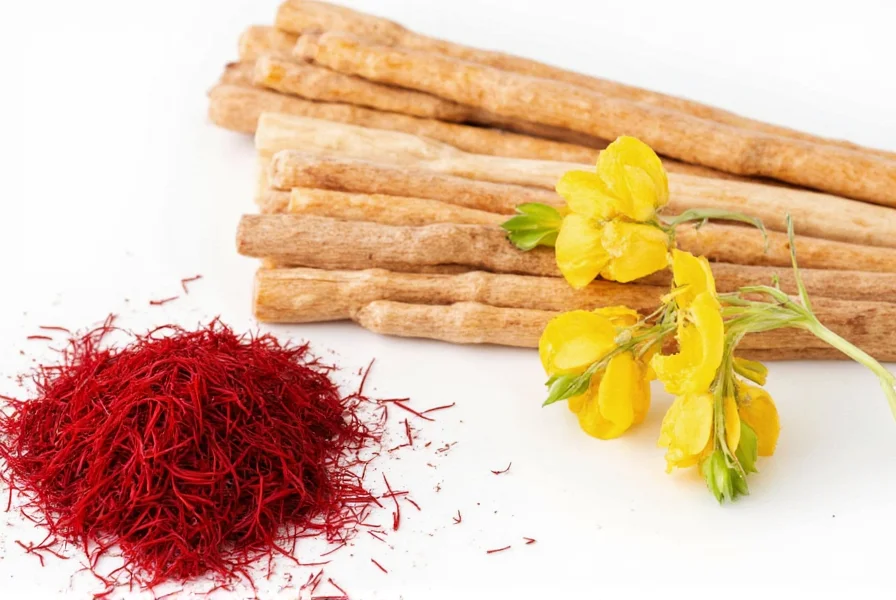When searching for affordable alternatives to saffron, understanding what makes this spice unique is crucial. Saffron, harvested from the delicate stigmas of Crocus sativus flowers, remains the world's most expensive spice by weight. Its distinctive golden hue, floral aroma, and subtle earthy flavor make it irreplaceable in traditional dishes like Spanish paella, Italian risotto, and Persian rice. However, its premium price tag—often exceeding $5,000 per pound—makes finding suitable substitutes a practical necessity for home cooks and professional chefs alike.
Understanding Saffron's Unique Properties
Saffron contributes three essential elements to dishes that any substitute must address:
- Color - The vibrant golden-yellow hue that defines many classic dishes
- Flavor - A complex profile with floral, honey-like notes and subtle earthiness
- Aroma - A distinctive fragrance that enhances the entire dining experience
Most substitutes only replicate one or two of these elements. When choosing a saffron replacement with similar flavor, consider which aspect matters most for your specific recipe. In paella, color dominates, while in Persian jeweled rice, both color and subtle flavor are critical.
| Substitute | Best For | Ratio to Saffron | Limitations |
|---|---|---|---|
| Turmeric | Color in rice dishes, soups | 1/8 tsp turmeric = 1 pinch saffron | Earthy flavor, no floral notes |
| Paprika | Mild flavor in stews, sauces | 1/4 tsp paprika = 1 pinch saffron | Reddish tint, stronger flavor |
| Safflower | Color in Mediterranean dishes | 1/2 tsp safflower = 1 pinch saffron | No distinctive flavor |
| Annatto | Color in Latin American cuisine | 1/4 tsp annatto = 1 pinch saffron | Nutty flavor profile |
Top Saffron Substitutes Explained
Turmeric: The Color Champion
When seeking a saffron substitute that gives yellow color, turmeric stands out as the most accessible option. This bright yellow spice provides nearly identical coloring at a fraction of saffron's cost. For the best saffron substitute for paella, use turmeric sparingly—too much creates an unpleasantly earthy flavor. Professional chefs often recommend blooming 1/8 teaspoon of turmeric in warm broth before adding to rice dishes for even distribution.

Paprika: Flavor-Focused Alternative
Sweet paprika offers both color and mild flavor that works well in many saffron applications. Hungarian sweet paprika provides the closest match without overwhelming heat. This substitute shines in dishes where saffron's floral notes aren't critical, such as certain stews or braises. For what can I use instead of saffron in risotto, try combining a small amount of paprika with a pinch of turmeric for balanced results.
Safflower: The Visual Twin
Often called "poor man's saffron," safflower petals provide an almost identical golden color without significantly altering flavor. This makes it ideal for dishes where saffron's primary role is visual appeal. Unlike turmeric, safflower won't add earthiness, making it preferable for delicate seafood dishes. Many professional kitchens use safflower as their go-to cheaper alternatives to saffron threads for everyday cooking.
Advanced Substitution Techniques
For recipes where saffron's distinctive flavor matters, consider these professional techniques:
- Hybrid approach: Combine 1/4 pinch real saffron with turmeric for authentic flavor at reduced cost
- Infusion method: Steep substitutes in warm liquid for 15-20 minutes before adding to dishes
- Layering flavors: Add subtle floral notes with a drop of orange blossom water when using color substitutes
When substituting in delicate dishes like bouillabaisse or saffron-infused sauces, remember that how to replace saffron in recipes successfully depends on timing. Add color substitutes early in cooking, but introduce flavor elements near the end to preserve their delicate characteristics.
When Substitutes Won't Suffice
Some dishes simply require real saffron. Traditional Spanish paella valenciana, Persian tahdig, and certain French sauces rely on saffron's unique properties that no substitute can fully replicate. In these cases, consider these cost-saving approaches:
- Purchase saffron in small quantities from reputable spice merchants
- Look for "saffron powder" which often contains real saffron mixed with fillers at lower cost
- Use whole threads and reuse them for multiple infusions
Remember that a single gram of quality saffron can flavor dozens of servings when used properly. Proper storage in an airtight container away from light preserves saffron's potency for up to two years.
Frequently Asked Questions
Can I use turmeric instead of saffron in paella?
Yes, turmeric works well as a color substitute in paella, but use only 1/8 teaspoon per serving to avoid overpowering earthiness. For better results, combine a small pinch of real saffron with turmeric to maintain authentic flavor while reducing cost.
What's the closest substitute for saffron flavor?
No single substitute perfectly replicates saffron's complex flavor, but a combination of mild paprika and a tiny amount of cardamom comes closest. For floral notes, add a single drop of orange blossom water to your dish near the end of cooking.
How much turmeric equals one pinch of saffron?
Use approximately 1/8 teaspoon of turmeric to replace one standard pinch (about 20 threads) of saffron. Always start with less—you can add more color during cooking but cannot remove excess.
Can I make my own saffron substitute at home?
Yes, create a custom blend using 3 parts turmeric, 1 part sweet paprika, and a pinch of ground cardamom. Store in an airtight container for up to 3 months. This mixture works well for color and provides a more complex flavor profile than single-ingredient substitutes.
Does saffron extract work as a substitute?
Saffron extract provides authentic flavor at lower cost than whole threads. Use 1/4 teaspoon of quality saffron extract to replace one pinch of threads. It dissolves easily in liquids and provides consistent coloring without stray threads in your finished dish.











 浙公网安备
33010002000092号
浙公网安备
33010002000092号 浙B2-20120091-4
浙B2-20120091-4